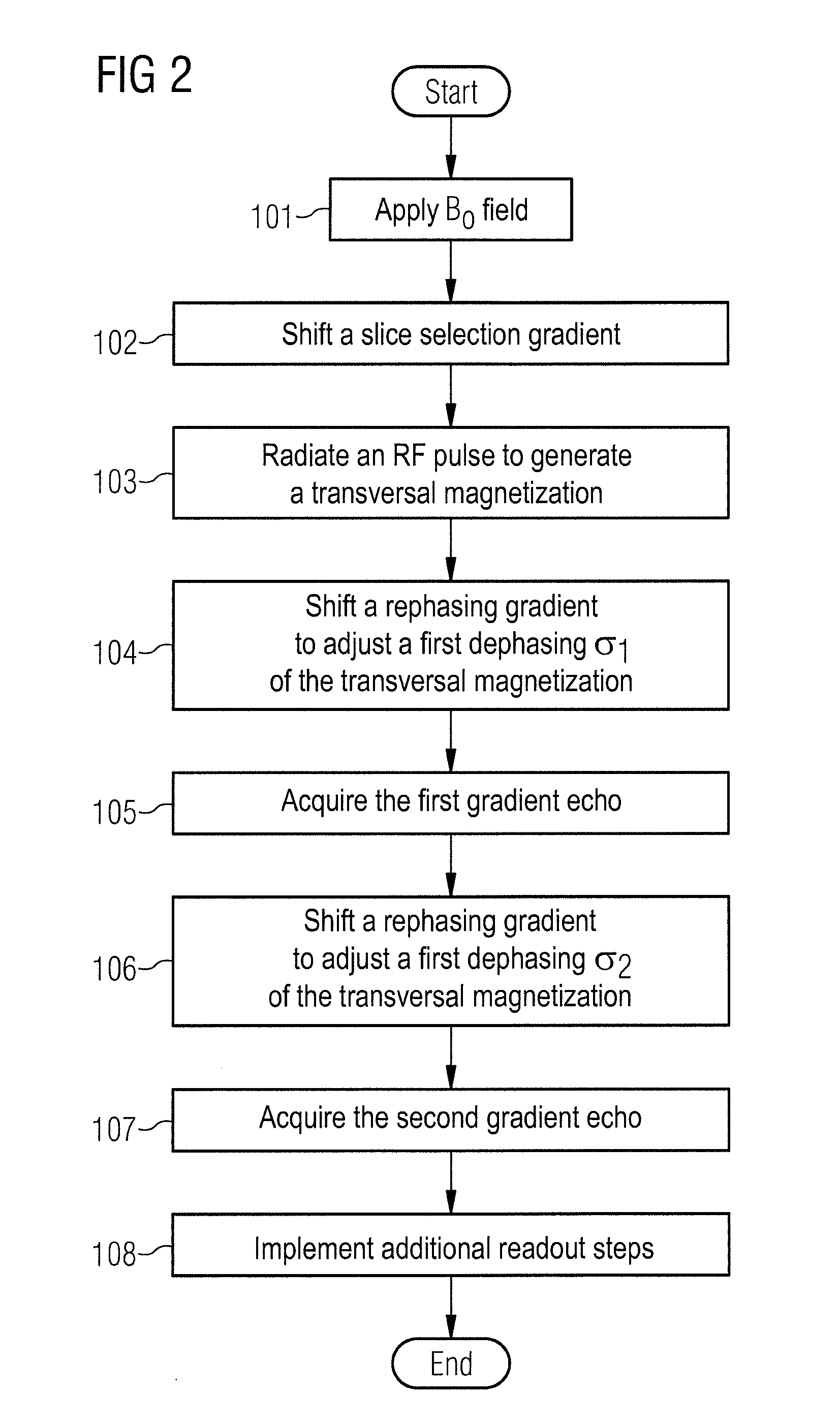Method and magnetic resonance system for imaging particles
a magnetic resonance system and particle technology, applied in the field of particle imaging methods, can solve the problems of long measurement time, hypointense image regions cannot be unambiguously associated, and signal loss, and achieve the effect of improving particle imaging
- Summary
- Abstract
- Description
- Claims
- Application Information
AI Technical Summary
Benefits of technology
Problems solved by technology
Method used
Image
Examples
Embodiment Construction
[0033]The imaging of magnetically active particles that generate an interference field (for example a dipole field) in an applied basic magnetic field is explained in detail using the embodiments of the present invention that are described in the following. In the gradient echo-based method, the dipole field generated by the particle is compensated via targeted dephasing in the readout, phase or slice coding direction in order to thus obtain an increased signal of protons that are located in the disrupted basic magnetic field. At the same time a weakened MR signal of the undistorted protons is acquired via the dephasing, such that the particle to be imaged can be shown with high contrast. The dephasing can be adjusted by uncompensated dephasing and rephasing gradients or via additional dephasing gradients. The strength of this adjustable dephasing can be specified in the unit “cycles per voxel (CpV)”, for example. A dephasing of the strength 1 CpV indicates that the phase difference...
PUM
 Login to View More
Login to View More Abstract
Description
Claims
Application Information
 Login to View More
Login to View More - R&D
- Intellectual Property
- Life Sciences
- Materials
- Tech Scout
- Unparalleled Data Quality
- Higher Quality Content
- 60% Fewer Hallucinations
Browse by: Latest US Patents, China's latest patents, Technical Efficacy Thesaurus, Application Domain, Technology Topic, Popular Technical Reports.
© 2025 PatSnap. All rights reserved.Legal|Privacy policy|Modern Slavery Act Transparency Statement|Sitemap|About US| Contact US: help@patsnap.com



